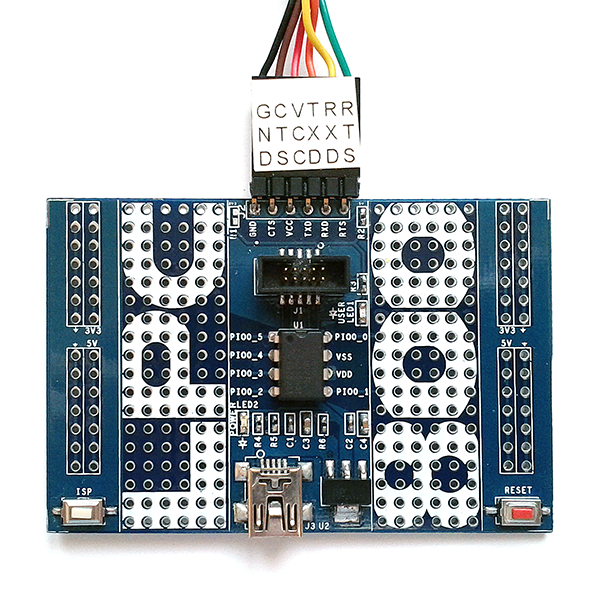 LPC800 Mini-Kit is a LPC810 evaluation board that made by NGX Technologies.
LPC800 Mini-Kit is a LPC810 evaluation board that made by NGX Technologies.
Select Quickstart and Import project(s).
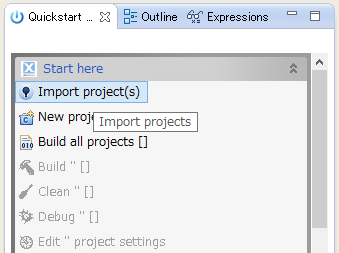 Select the ZIP archive file for UOS-LPC800 projects.
Select the ZIP archive file for UOS-LPC800 projects.
 You will see the projects on the dialog window, please select the projects with the checkboxes.
You will see the projects on the dialog window, please select the projects with the checkboxes.
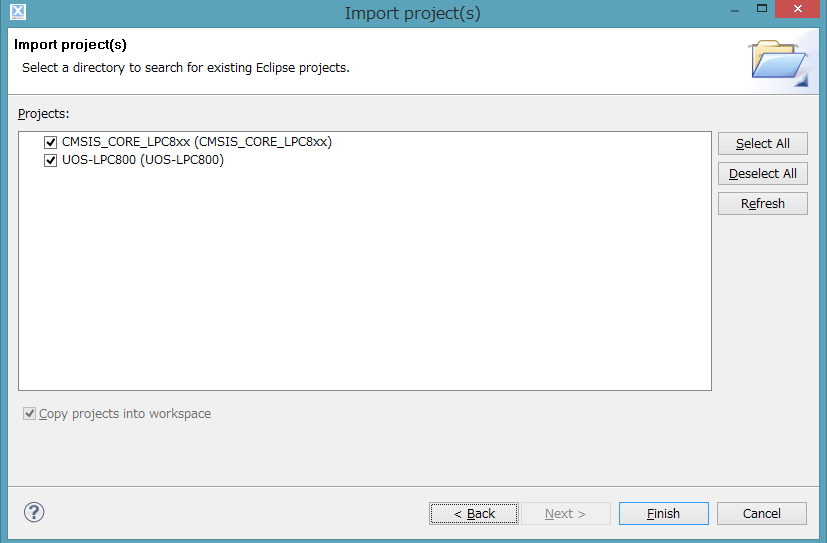 Push the 'Finish' button to import them.
Push the 'Finish' button to import them.
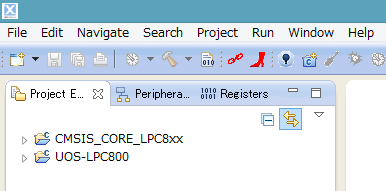
 The output of the build is UOS-LPC800.HEX.
The output of the build is UOS-LPC800.HEX.
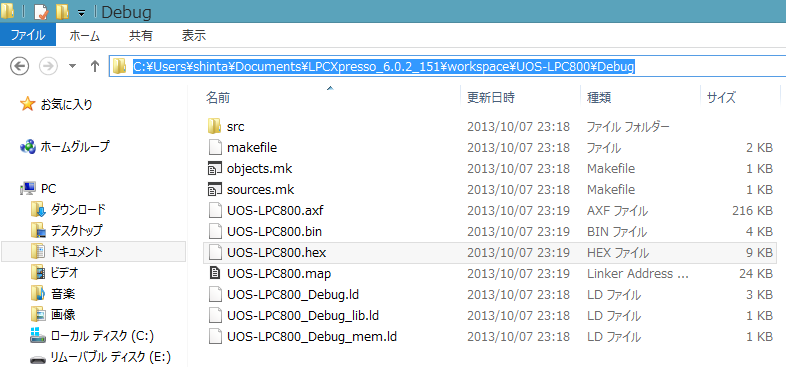
 You can check the target serial port name with a serial terminal application such as Tera Term... etc...
You can check the target serial port name with a serial terminal application such as Tera Term... etc...
 or ... You will see the port name in the device manager on Windows.
or ... You will see the port name in the device manager on Windows.
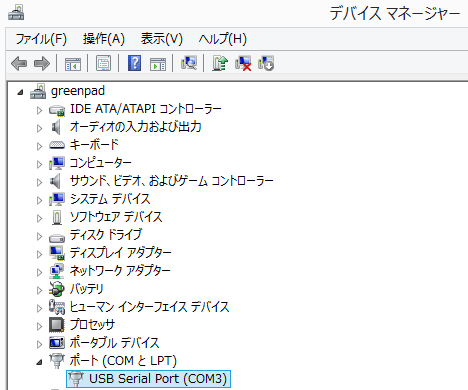 Please select the target serial port, your LPC800 device and the baud rate.
Please select the target serial port, your LPC800 device and the baud rate.
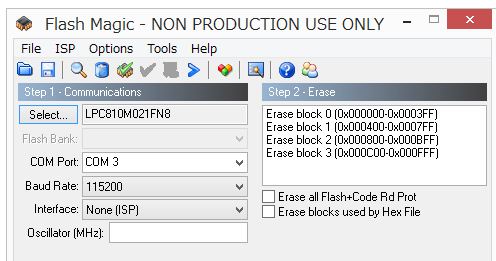 Note that, you should press 'RESET' button also 'ISP' button for entering ISP mode.
You can check your environment for writing your binary with trying 'Read Device Signature...' feature.
Note that, you should press 'RESET' button also 'ISP' button for entering ISP mode.
You can check your environment for writing your binary with trying 'Read Device Signature...' feature.
 You will see the device signature if the connection is okey.
You will see the device signature if the connection is okey.
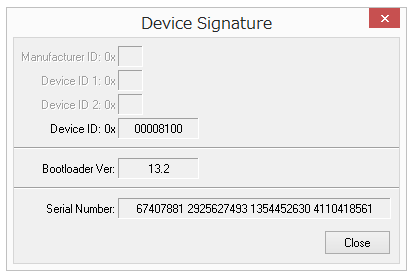 Please check USE_LED flag in 'board_lpc800_miniboard.c' for the LED toggling.
Please check USE_LED flag in 'board_lpc800_miniboard.c' for the LED toggling.
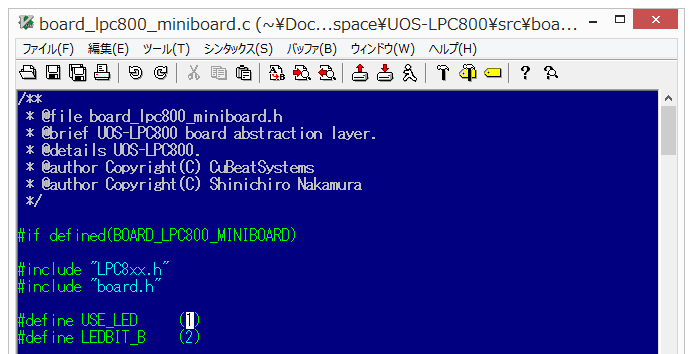 Press 'Start' Button to start the programming.
Press 'Start' Button to start the programming.
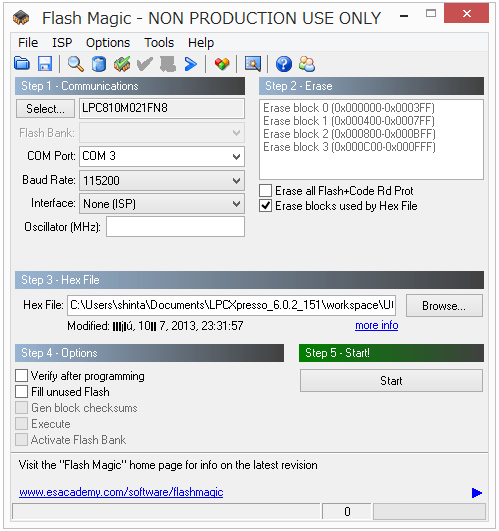

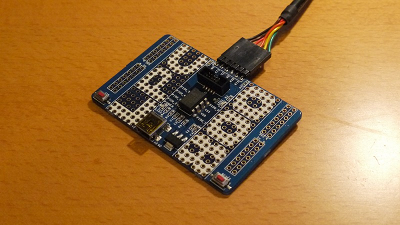
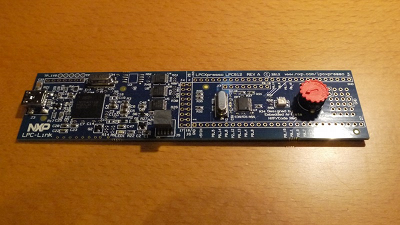
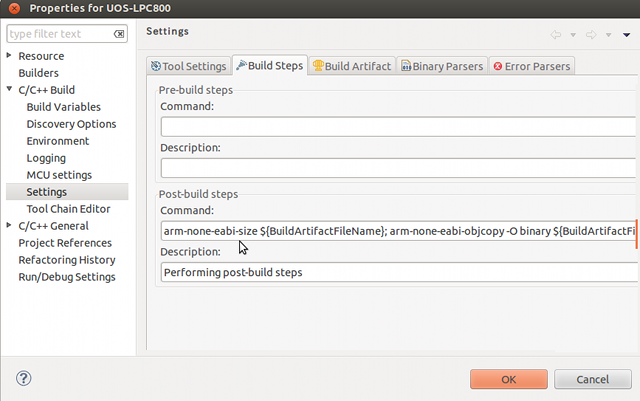
arm-none-eabi-size ${BuildArtifactFileName};
arm-none-eabi-objcopy -O binary ${BuildArtifactFileName} ${BuildArtifactFileBaseName}.bin;
checksum -p ${TargetChip} -d ${BuildArtifactFileBaseName}.bin;
arm-none-eabi-size ${BuildArtifactFileName};
arm-none-eabi-objcopy -O binary ${BuildArtifactFileName} ${BuildArtifactFileBaseName}.bin;
checksum -p ${TargetChip} -d ${BuildArtifactFileBaseName}.bin;
arm-none-eabi-objcopy -O ihex ${BuildArtifactFileName} ${BuildArtifactFileBaseName}.hex;